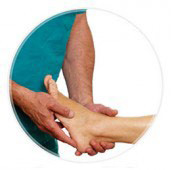This page provides general information about some of the procedures that your Doctor may consider when determining which is most appropriate for you.
This is background information only and should not be interpreted as a recommendation about any particular procedure. Your Doctor will help you choose the most appropriate option for your specific condition and circumstances.
This is background information only and should not be interpreted as a recommendation about any particular procedure. Your Doctor will help you choose the most appropriate option for your specific condition and circumstances.
Treatment Goals
The treatment of spider and reticular veins is typically performed with one or more of the these goals in mind:
- Improving symptoms
- Preventing complications
- Improving appearance
- Treating any underlying venous disease
Diagnosis
Because some people with spider veins also have underlying venous incompetence, it is common for a full diagnosis to be carried out prior to treatment to determine the extent of the problem. If your Doctor considers this necessary in your case, they will usually use a duplex ultrasound to check if there is reflux in your larger superficial veins. This will then allow them to recommend the appropriate treatment plan for you.Other diagnostic procedures that your Doctor may consider include:
- Deep vein thrombosis scans
- Blood tests
- Additional ultrasound studies to asses arterial blood supply
What Does Treatment Involve?
Because spider and reticular veins are so close to the surface of your skin, they tend to be treated in a minimally invasive way. This means that the procedures commonly used for spider and reticular veins are relatively painless, quick and can be performed in your Doctor’s consulting rooms. You are usually able to return to your normal activities straight away. After treatment your Doctor may recommend particular steps such as walking and the use of compression stockings to help you maximise the benefits of your treatment.It is important to understand that there is no perfect treatment for this condition, and you may require multiple treatment sessions to achieve a good improvement.
Treatment Options
Sclerotherapy
Sclerotherapy, also called microsclerotherapy when used to treat small spider veins, is commonly recognised as the gold standard method of treating spider and reticular veins. It has been in use for decades and is recognised as a safe and effective procedure. However, like all treatments it may not work for all patients and does have potential side-effects which your Doctor will discuss with you.The procedure involves an injection of solution called a sclerosant into the spider veins using a very fine needle. The treated vein undergoes fibrosis and over time will be removed by your body. This process can take a few weeks, and so if your Doctor feels that multiple treatments to the same area are necessary they will often be scheduled a few weeks apart.
Depending on how extensive the area to be treated is and any other examinations or treatments your Doctor needs to perform at the same time, a sclerotherapy procedure may take as little as 15-20 minutes.
Treatment by sclerotherapy rarely involves any serious complications but can more commonly involve minor side-effects such as redness and bruising, phlebitis (inflammation of the treated area), pigmentation (a usually light ‘staining’ of the skin in the treated area), and small tender lumps which contain trapped blood. These are indications that the treatment has had its intended effect and usually they disappear without issue in a couple of weeks. In some cases pigmentation and matting can persist for a significantly longer period though. Your Doctor may recommend the use of compression stockings for a period of time after your treatment to help reduce the extent of these side-effects and maximise the benefit from your treatment.
Laser
A laser is applied to the surface of the skin, avoiding the need for injections or incisions.Lasers emit a specific wavelength of light onto the vein, causing destruction of the spider veins which will then fade over time.This approach is a newer technique than sclerotherapy and is not currently as well accepted by Doctors nor as well established in terms of the evidence supporting its safety and efficacy for the removal of spider veins.
When the laser is applied patients feel a strong pinching sensation. To numb the area being treated, a local anaesthetic cream may be applied, and the procedure generally lasts for 15-20 minutes. Common side effects include temporary bruising, itching, swelling and skin darkening or lightening in the treated area. These typically resolve themselves in a couple of weeks.
Following the procedure, your Doctor may recommend the use of compression stockings for a period of time.









